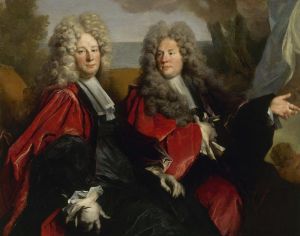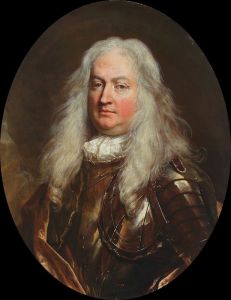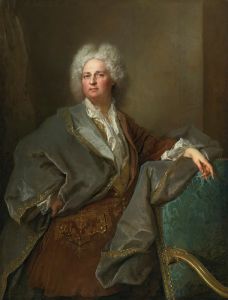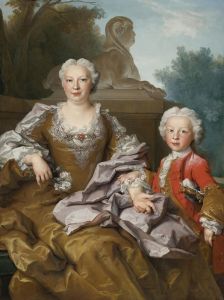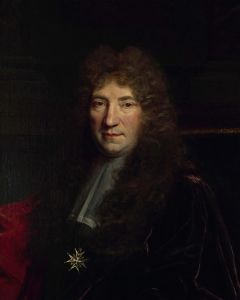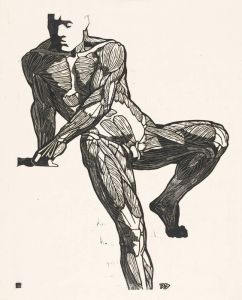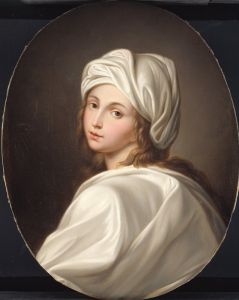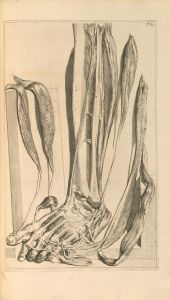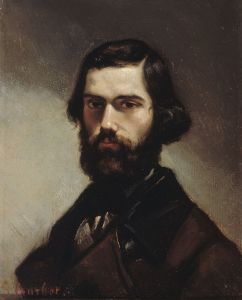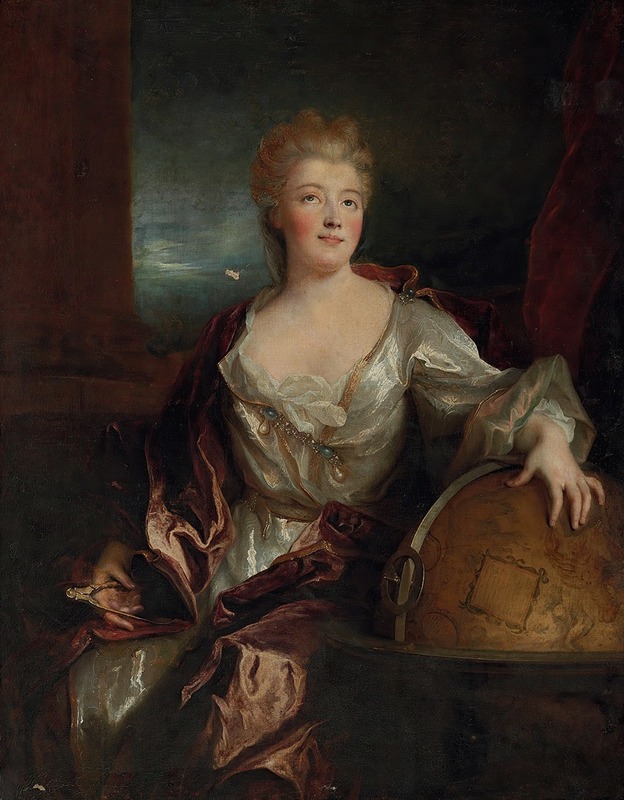
Portrait of Gabrielle-Émilie le Tonnelier de Breteuil, Marquise du Châtelet
A hand-painted replica of Nicolas de Largillière’s masterpiece Portrait of Gabrielle-Émilie le Tonnelier de Breteuil, Marquise du Châtelet, meticulously crafted by professional artists to capture the true essence of the original. Each piece is created with museum-quality canvas and rare mineral pigments, carefully painted by experienced artists with delicate brushstrokes and rich, layered colors to perfectly recreate the texture of the original artwork. Unlike machine-printed reproductions, this hand-painted version brings the painting to life, infused with the artist’s emotions and skill in every stroke. Whether for personal collection or home decoration, it instantly elevates the artistic atmosphere of any space.
Nicolas de Largillière's "Portrait of Gabrielle-Émilie le Tonnelier de Breteuil, Marquise du Châtelet" is a significant work of art that captures the essence of one of the most remarkable women of the 18th century. Gabrielle-Émilie le Tonnelier de Breteuil, known as the Marquise du Châtelet, was an eminent French mathematician, physicist, and author during the Enlightenment period. She is best known for her translation and commentary on Isaac Newton's "Principia Mathematica," which remains the standard French translation to this day.
Nicolas de Largillière, the artist behind this portrait, was a prominent French painter renowned for his portraits of the nobility and bourgeoisie. Born in Paris in 1656, Largillière trained in Antwerp and worked in England before returning to France, where he became a leading portraitist. His style is characterized by its rich color palette, attention to detail, and the ability to capture the personality and status of his subjects.
The portrait of the Marquise du Châtelet is a testament to Largillière's skill in portraying the intellectual and social stature of his subjects. In this painting, the Marquise is depicted with an air of elegance and intelligence, reflecting her status as a leading intellectual figure of her time. She is dressed in the luxurious attire typical of the French aristocracy, which underscores her noble status. The attention to detail in the fabric and the subtle play of light and shadow are indicative of Largillière's mastery in rendering textures and creating a lifelike representation.
The Marquise's pose and expression in the portrait convey a sense of confidence and poise, attributes that were essential to her role as a woman navigating the male-dominated world of science and philosophy. Her contribution to the Enlightenment, particularly in the field of physics, was groundbreaking. Her work on the translation of Newton's "Principia" included a comprehensive commentary that clarified and expanded upon Newton's ideas, making them more accessible to a broader audience. This work not only demonstrated her deep understanding of complex scientific concepts but also her ability to communicate them effectively.
Largillière's portrait of the Marquise du Châtelet is more than just a representation of her physical appearance; it is a celebration of her intellectual achievements and her role as a trailblazer for women in science. The painting serves as a historical document that highlights the intersection of art, science, and gender during the Enlightenment. It reminds viewers of the significant contributions made by women like the Marquise, who challenged societal norms and paved the way for future generations of female scientists and intellectuals.
In summary, Nicolas de Largillière's portrait of Gabrielle-Émilie le Tonnelier de Breteuil, Marquise du Châtelet, is a masterful depiction of one of the Enlightenment's most influential figures. Through his artistry, Largillière captures not only the Marquise's noble status but also her intellectual prowess and enduring legacy in the fields of science and philosophy.






